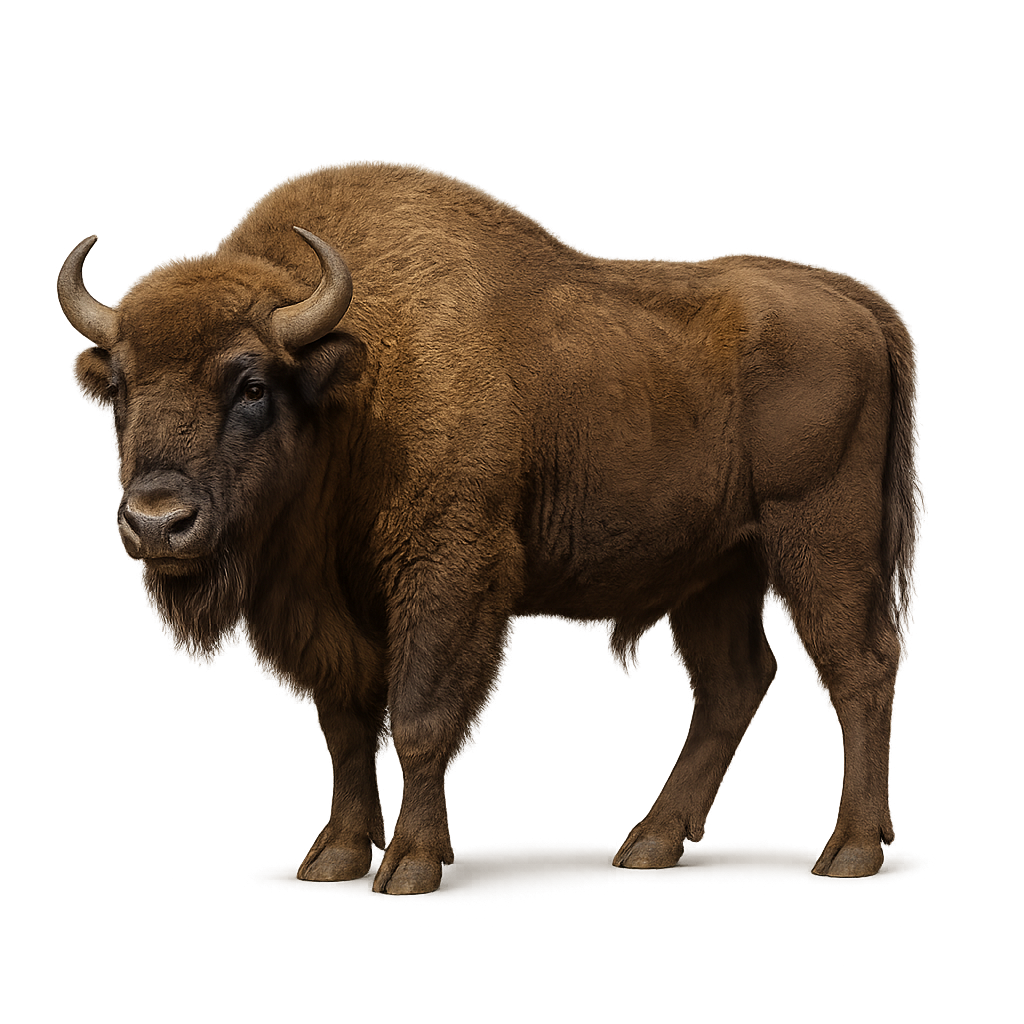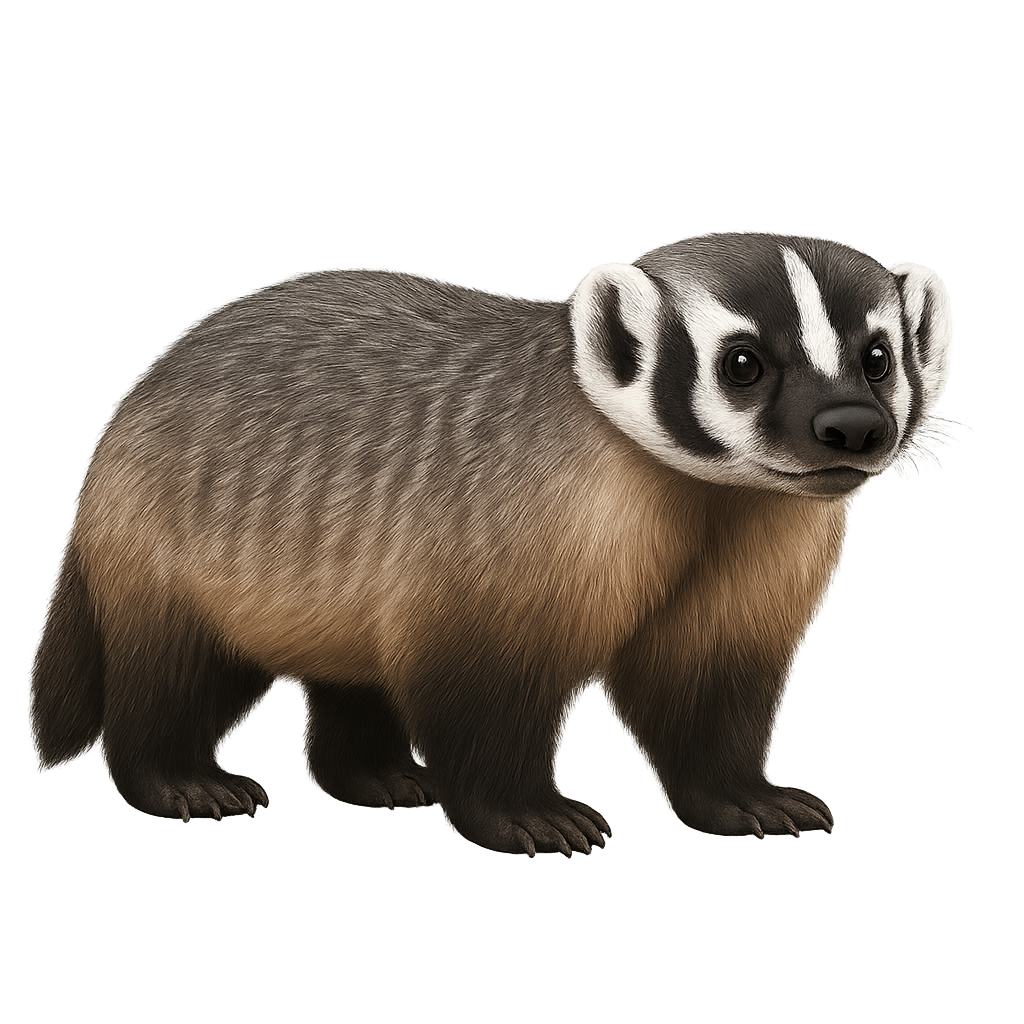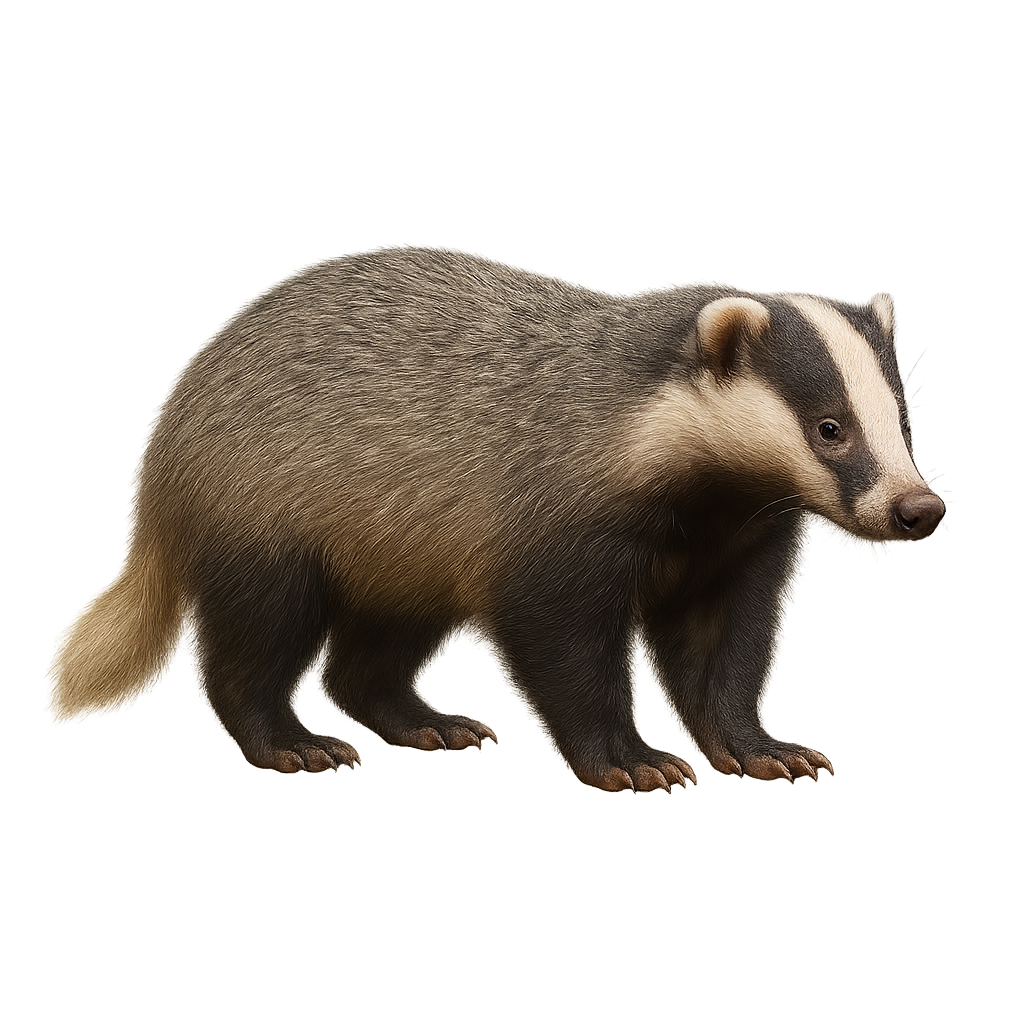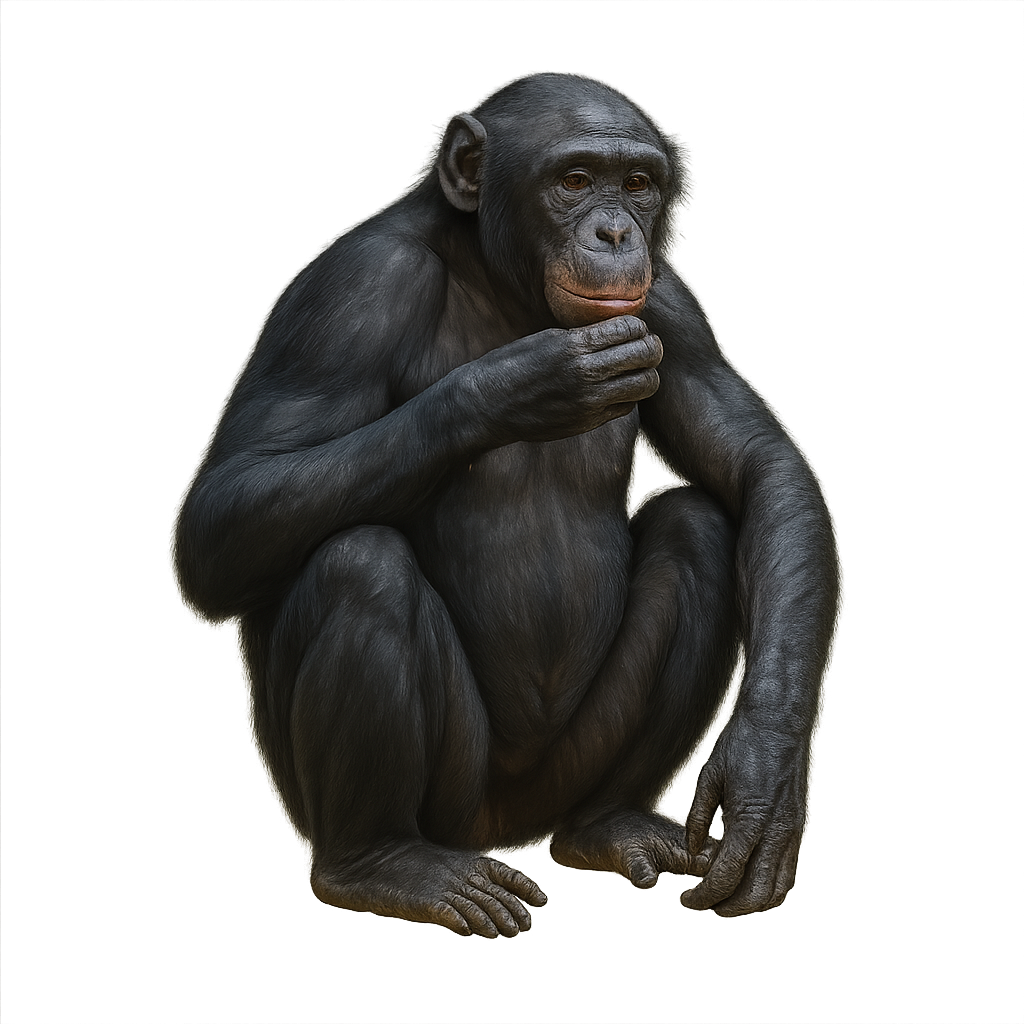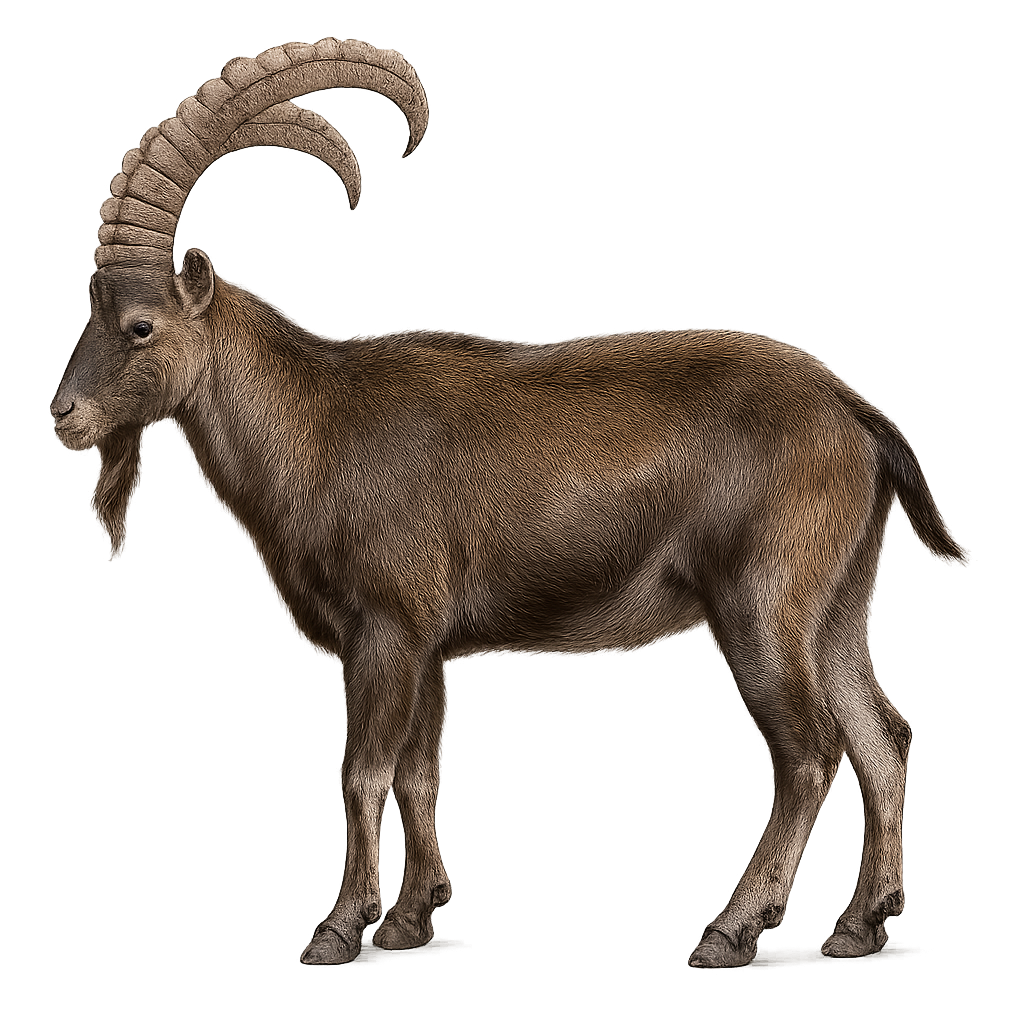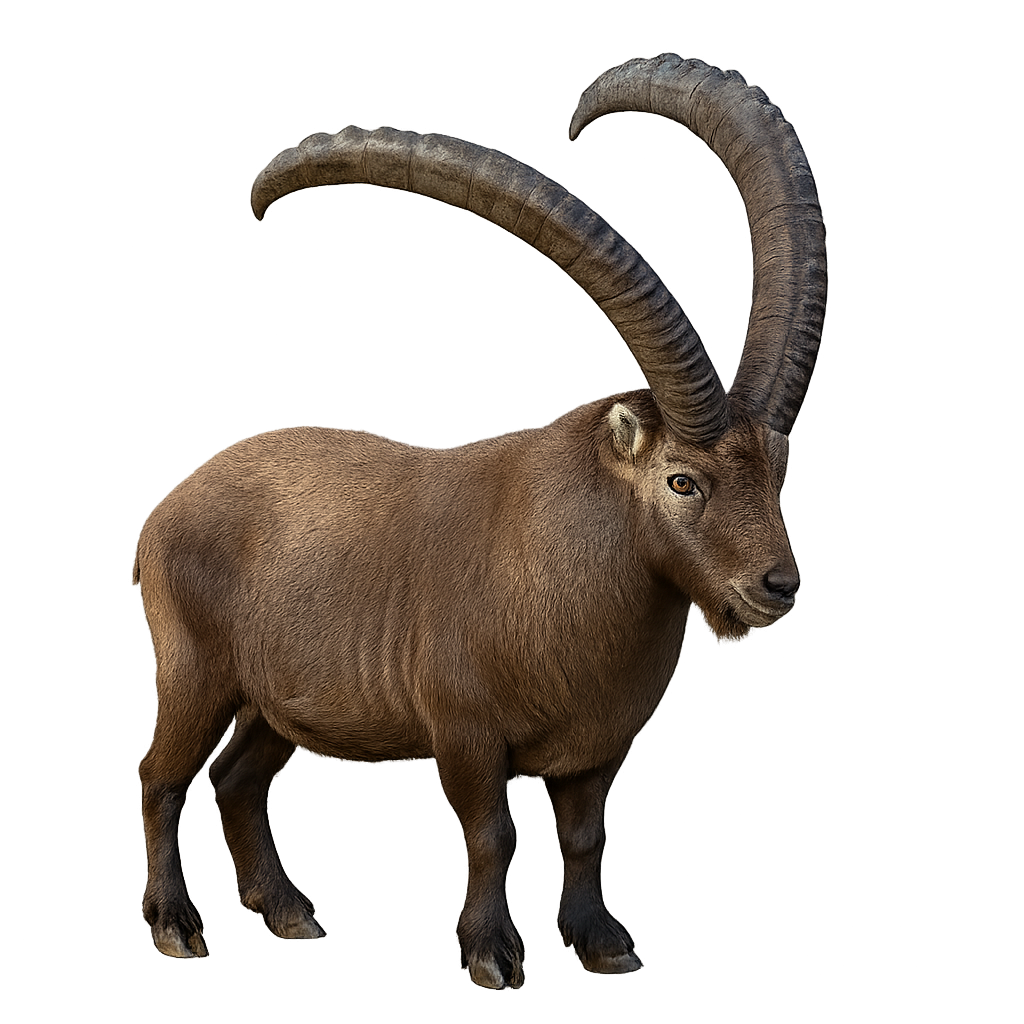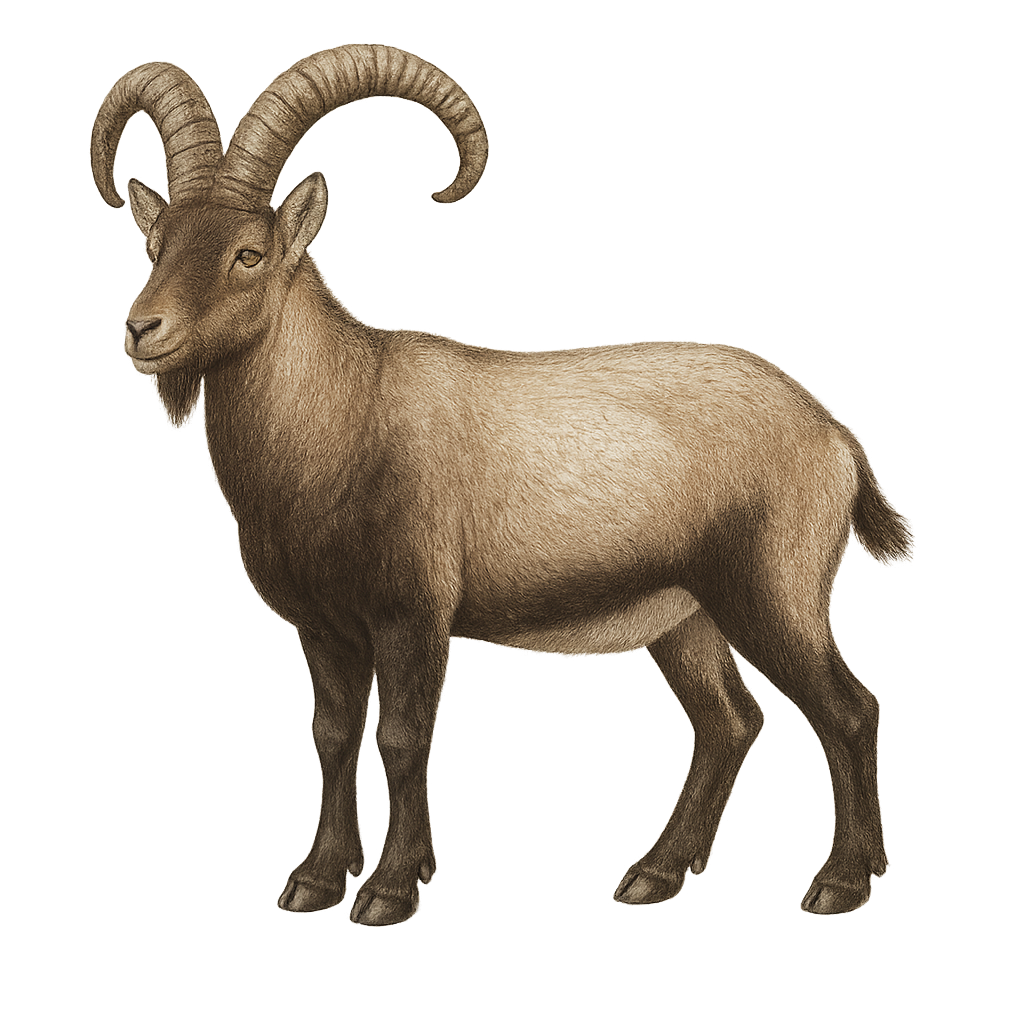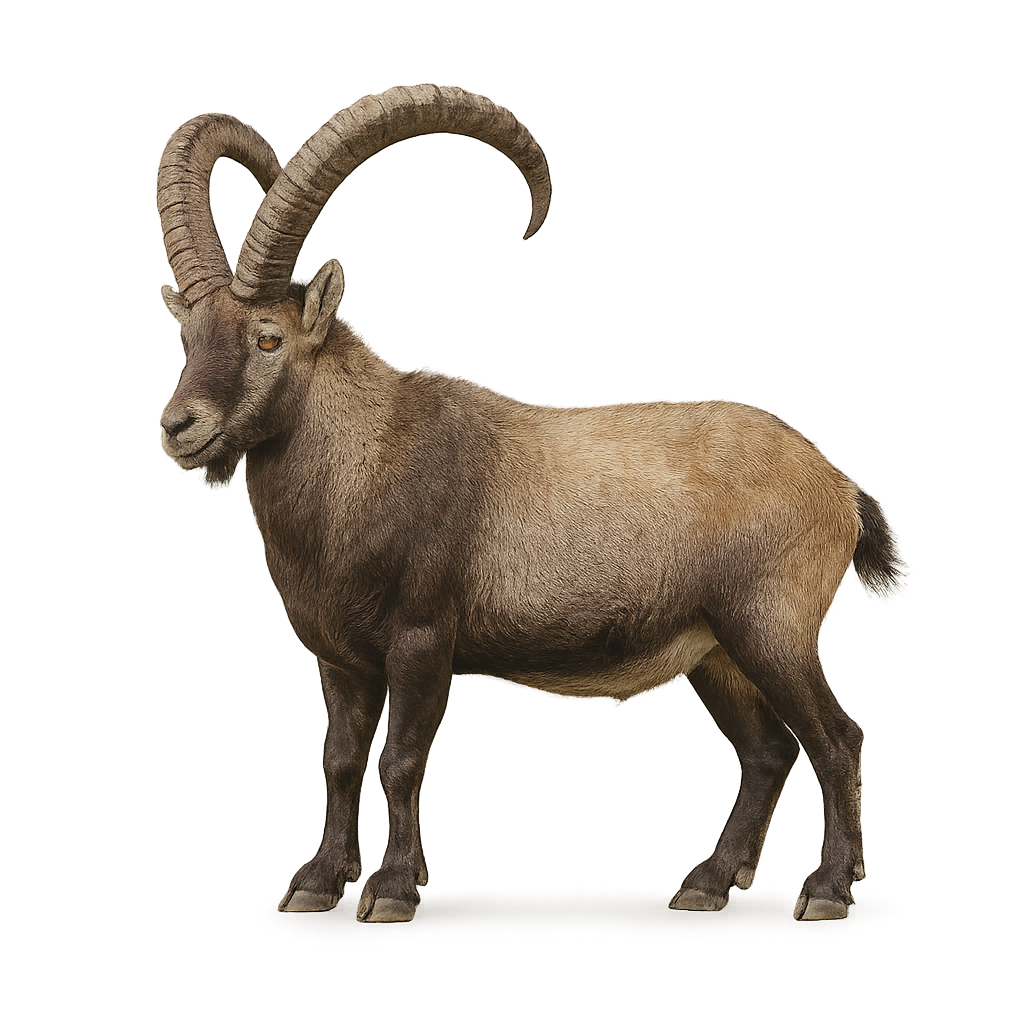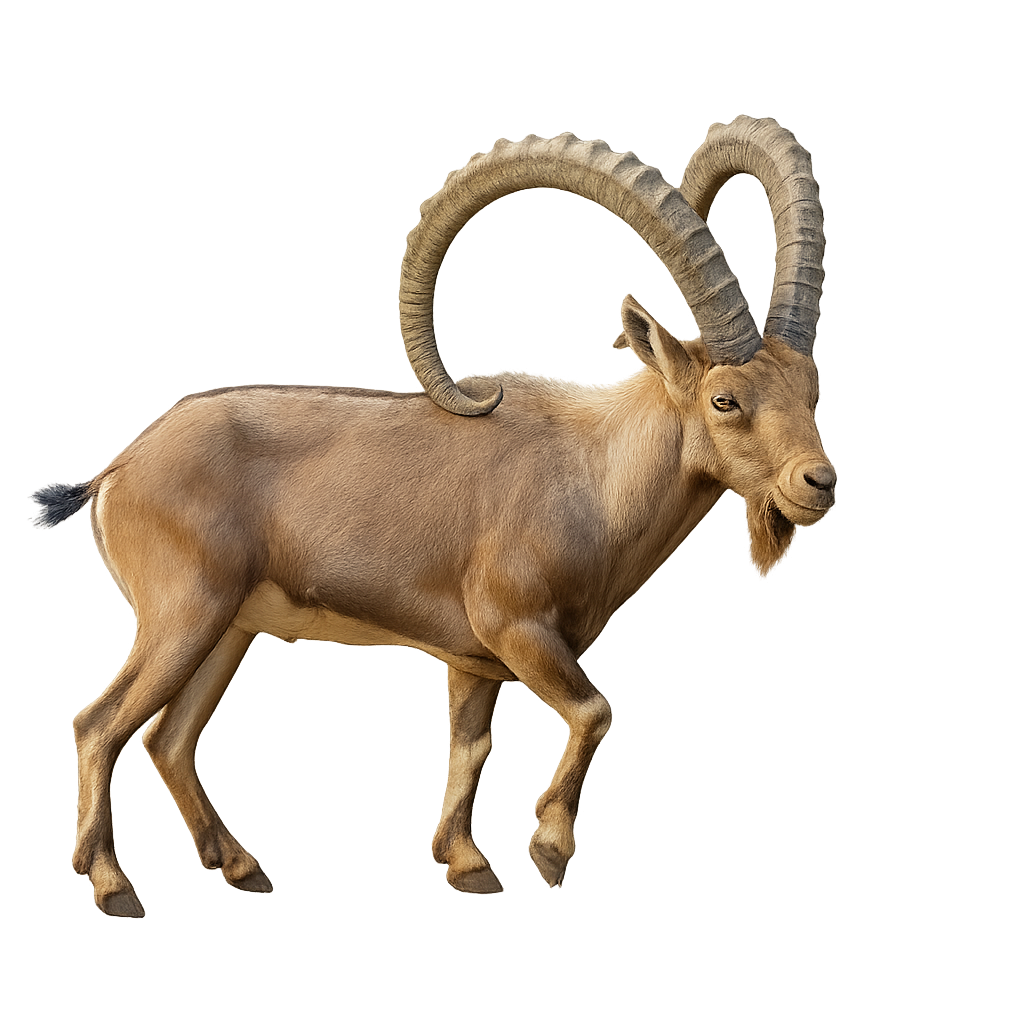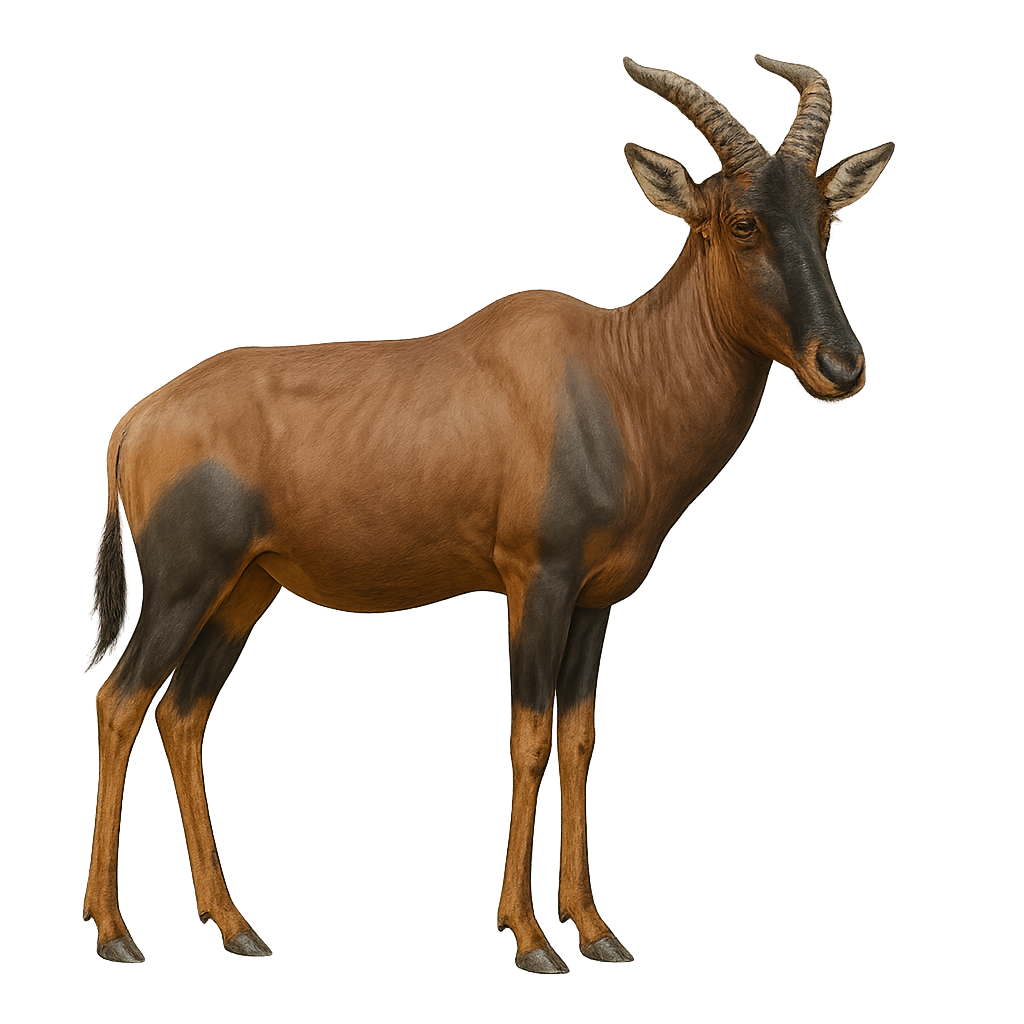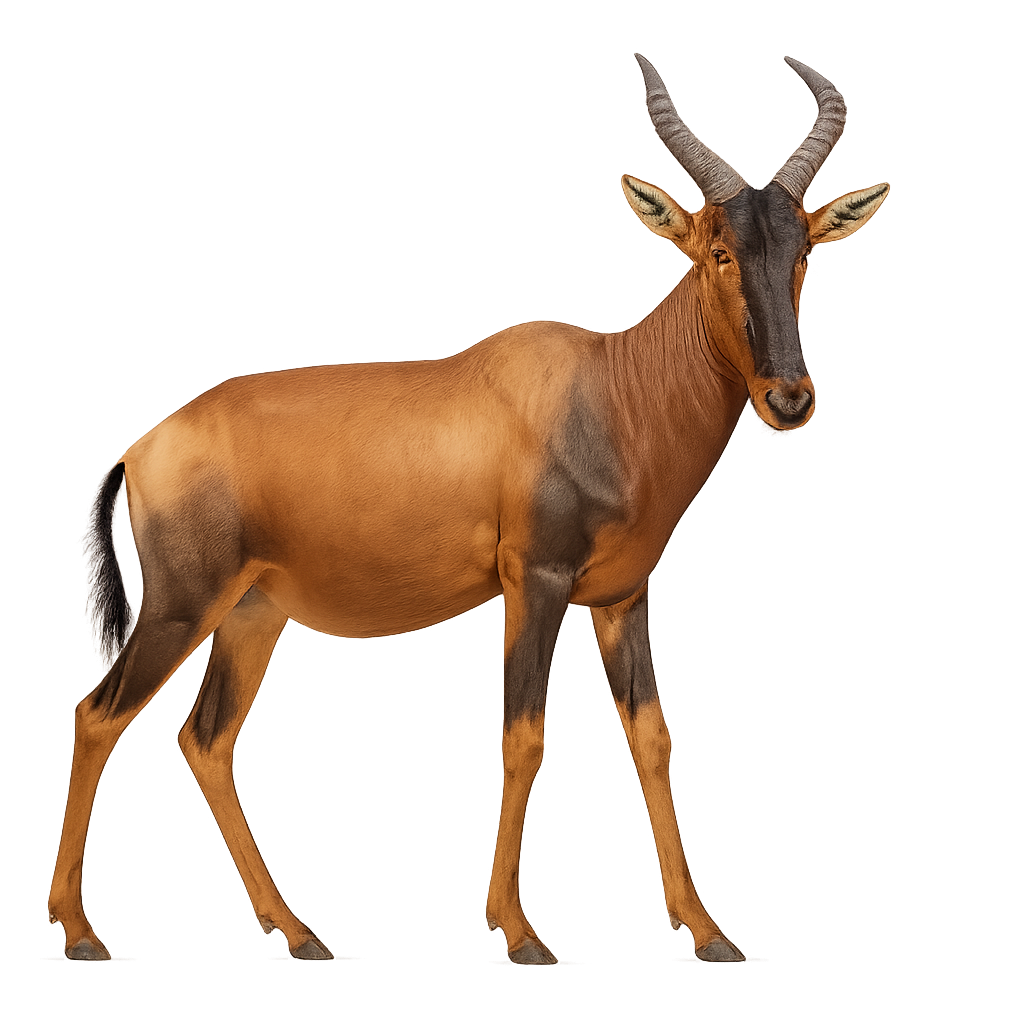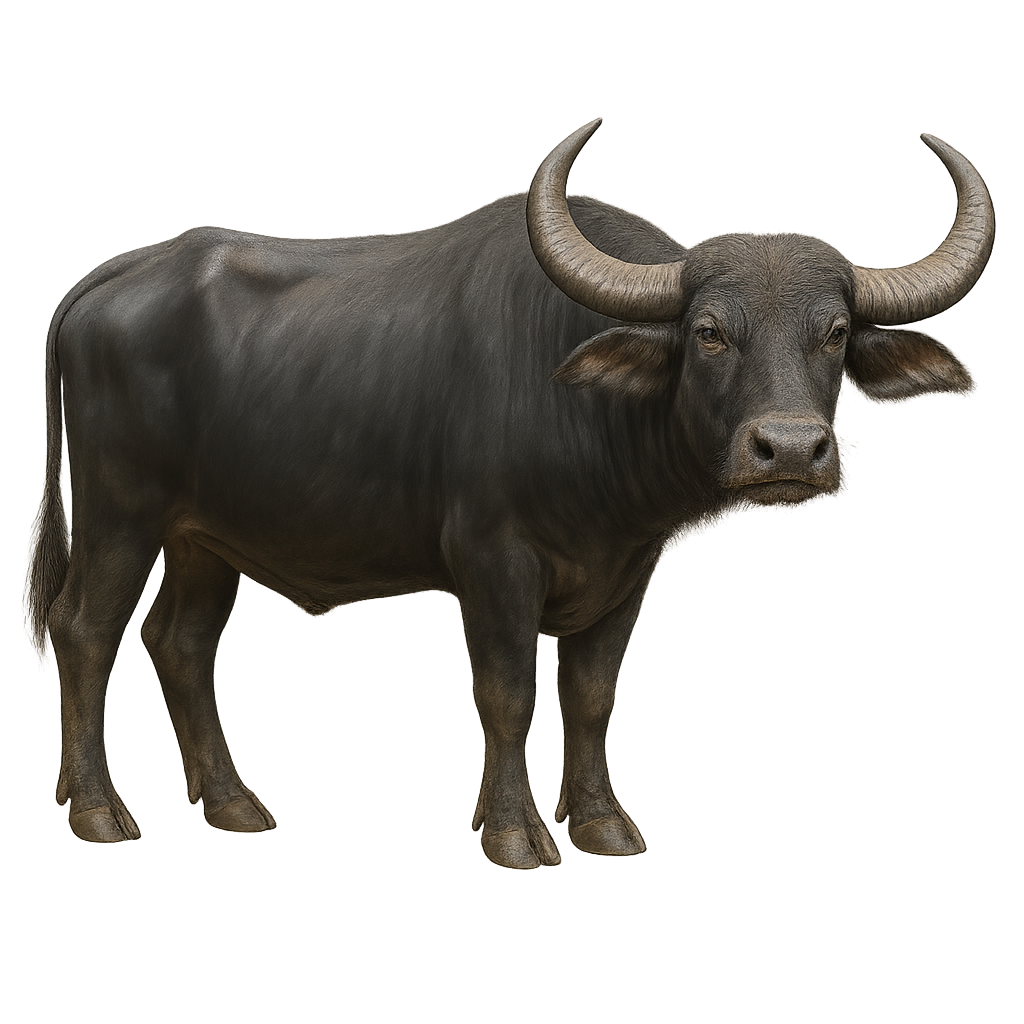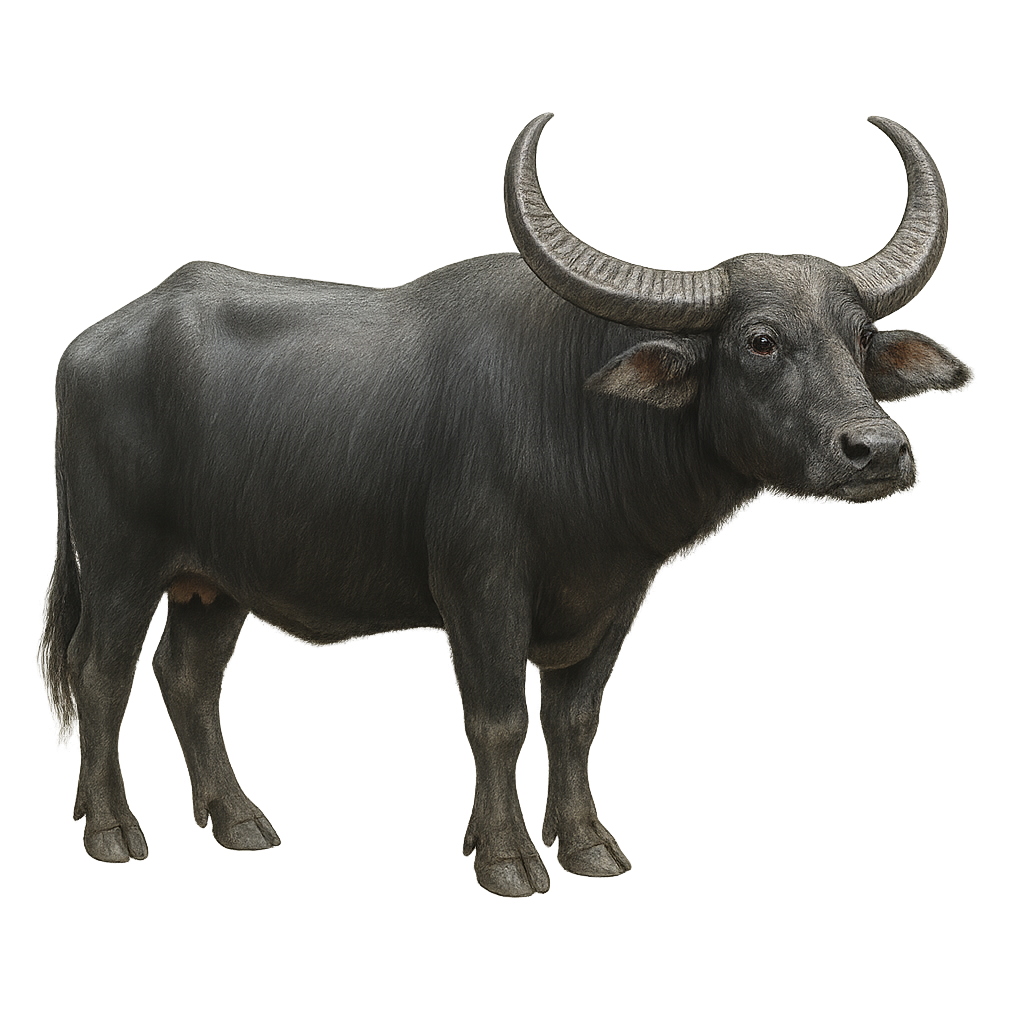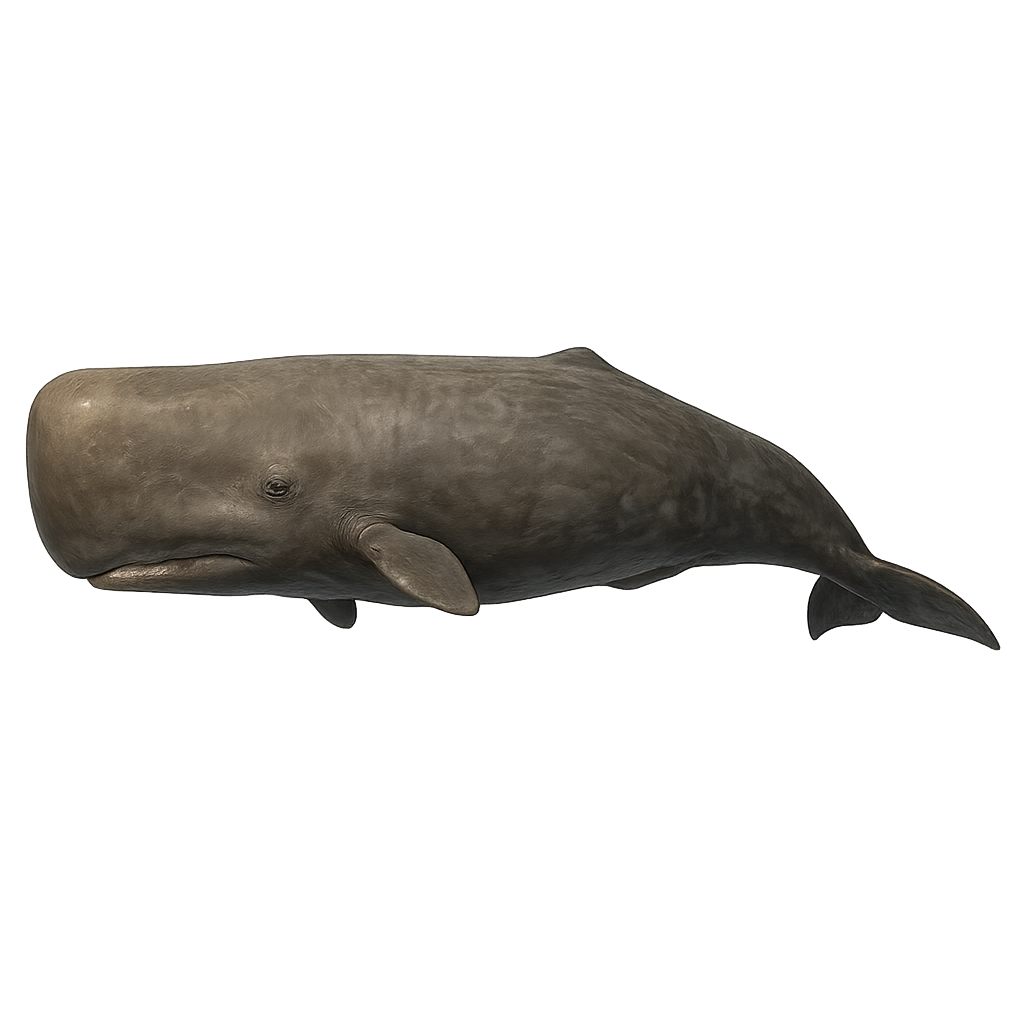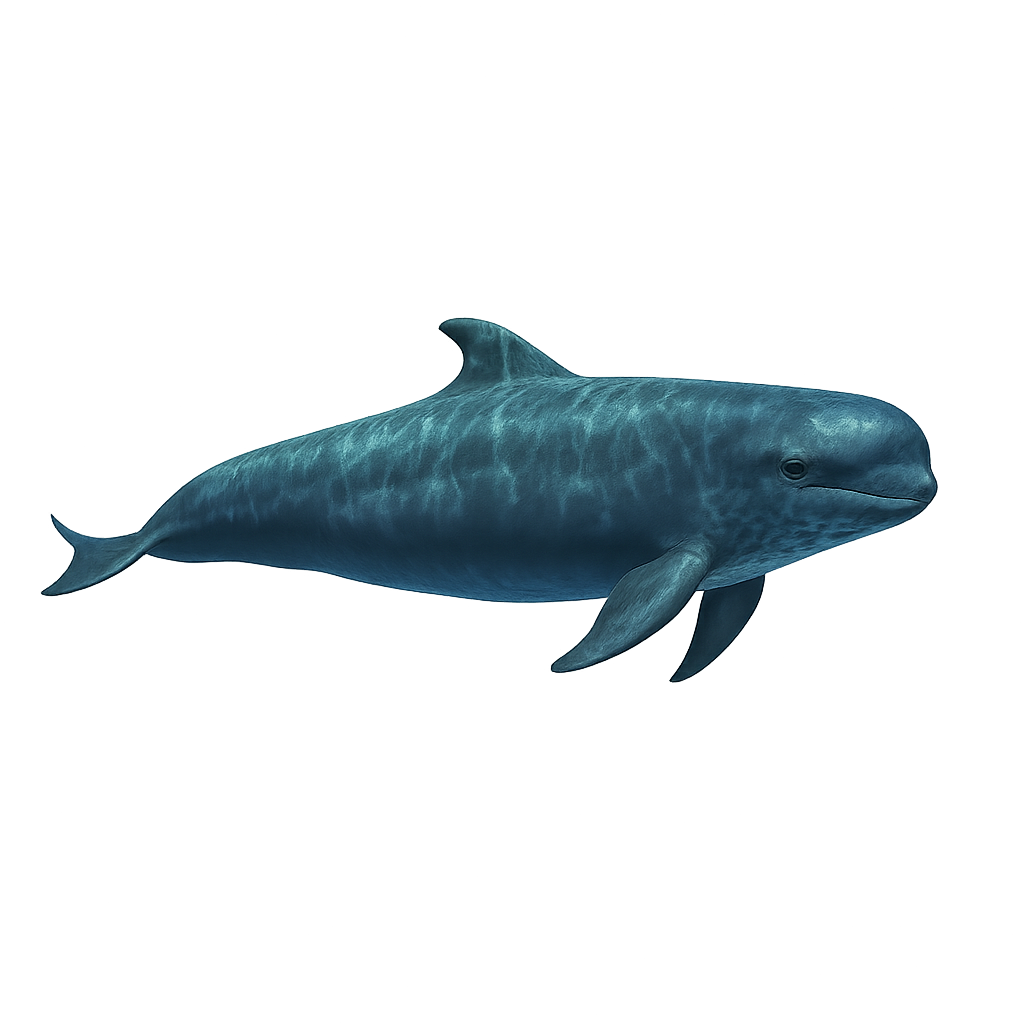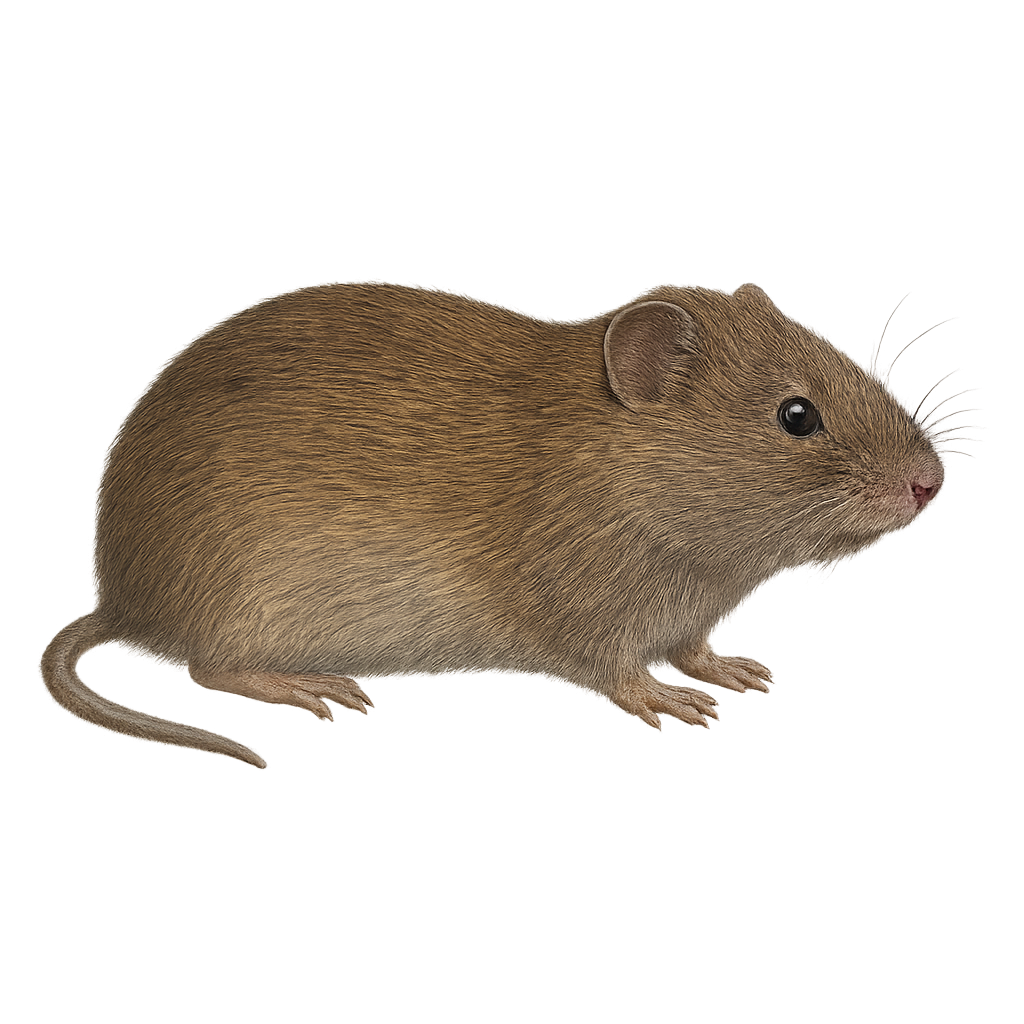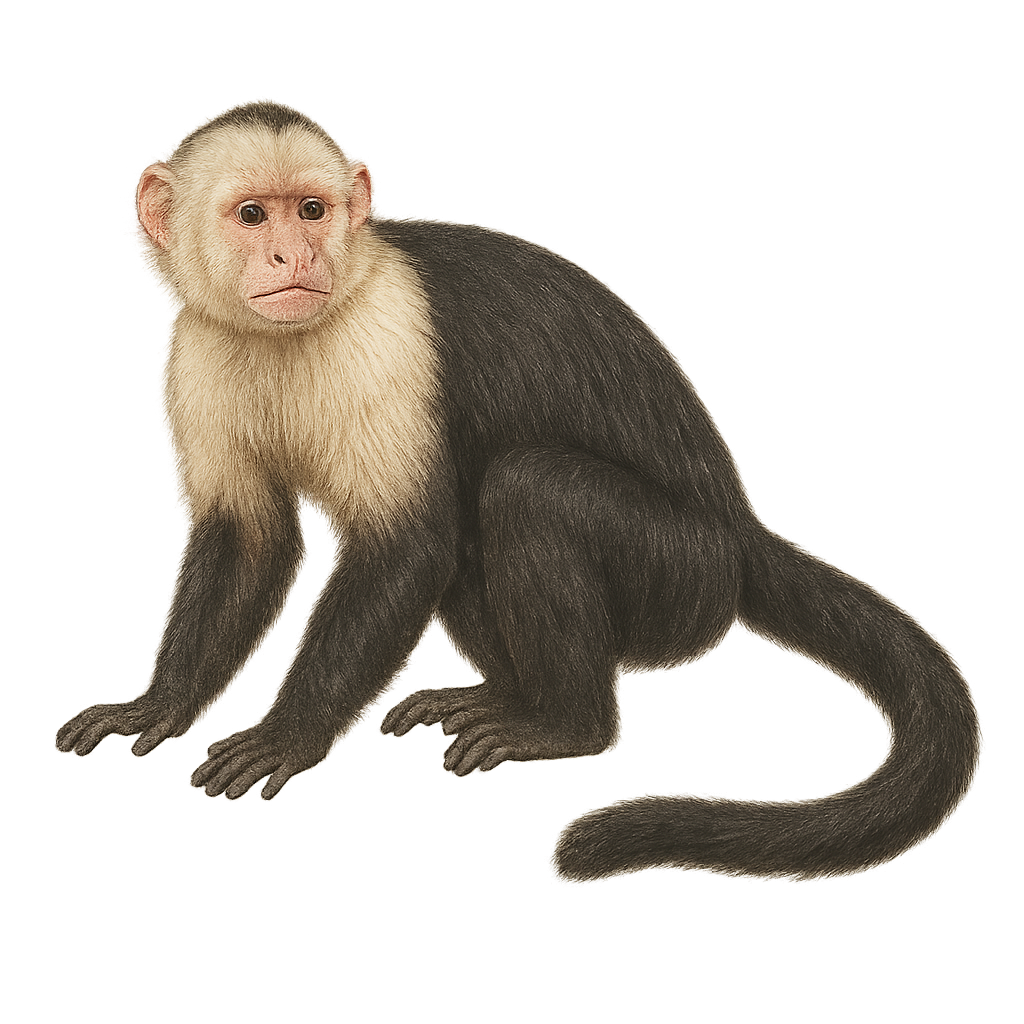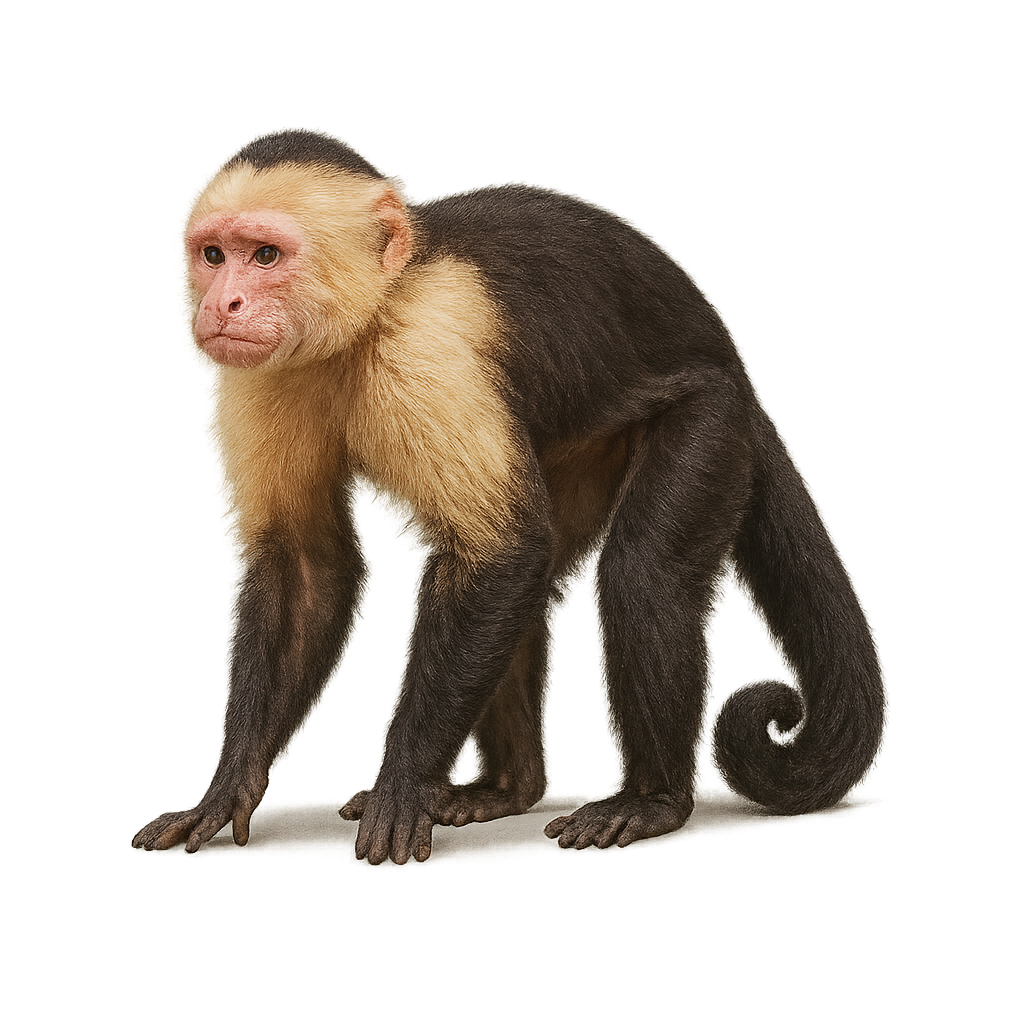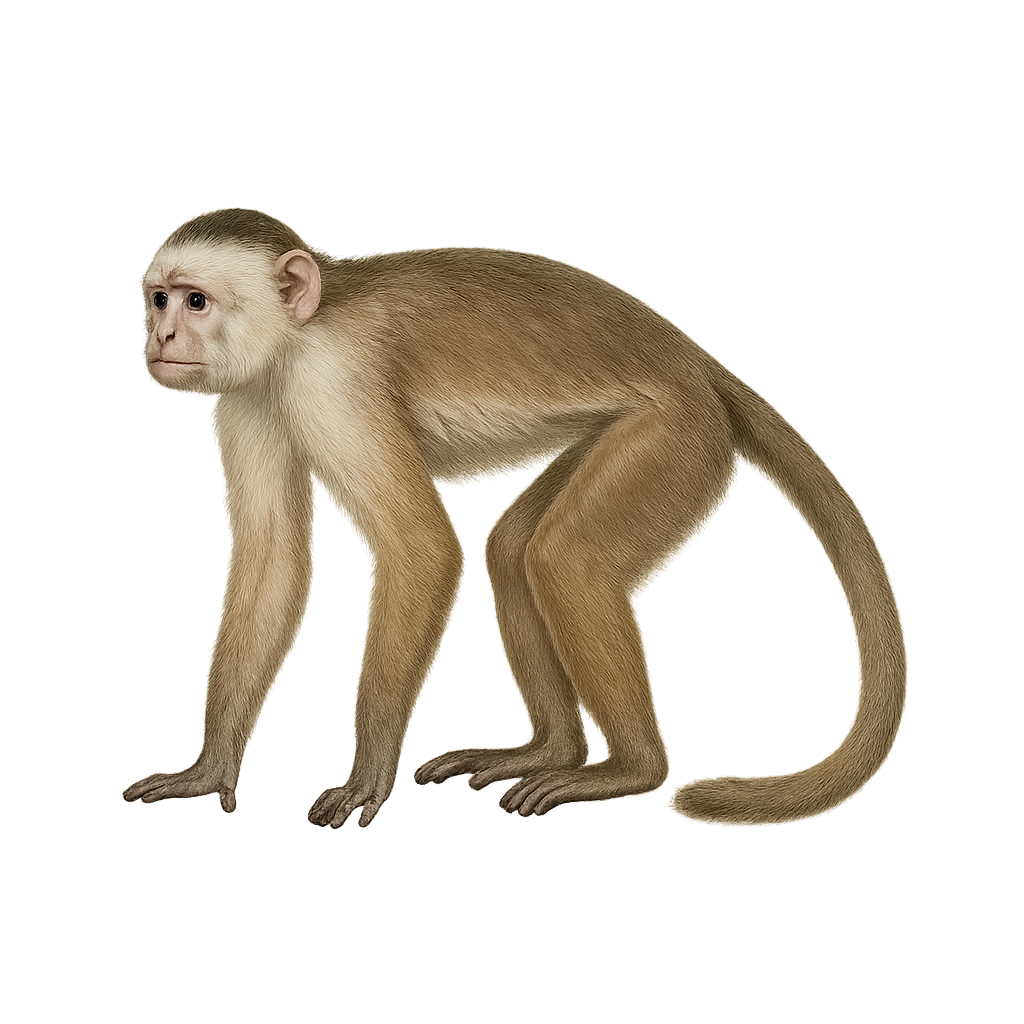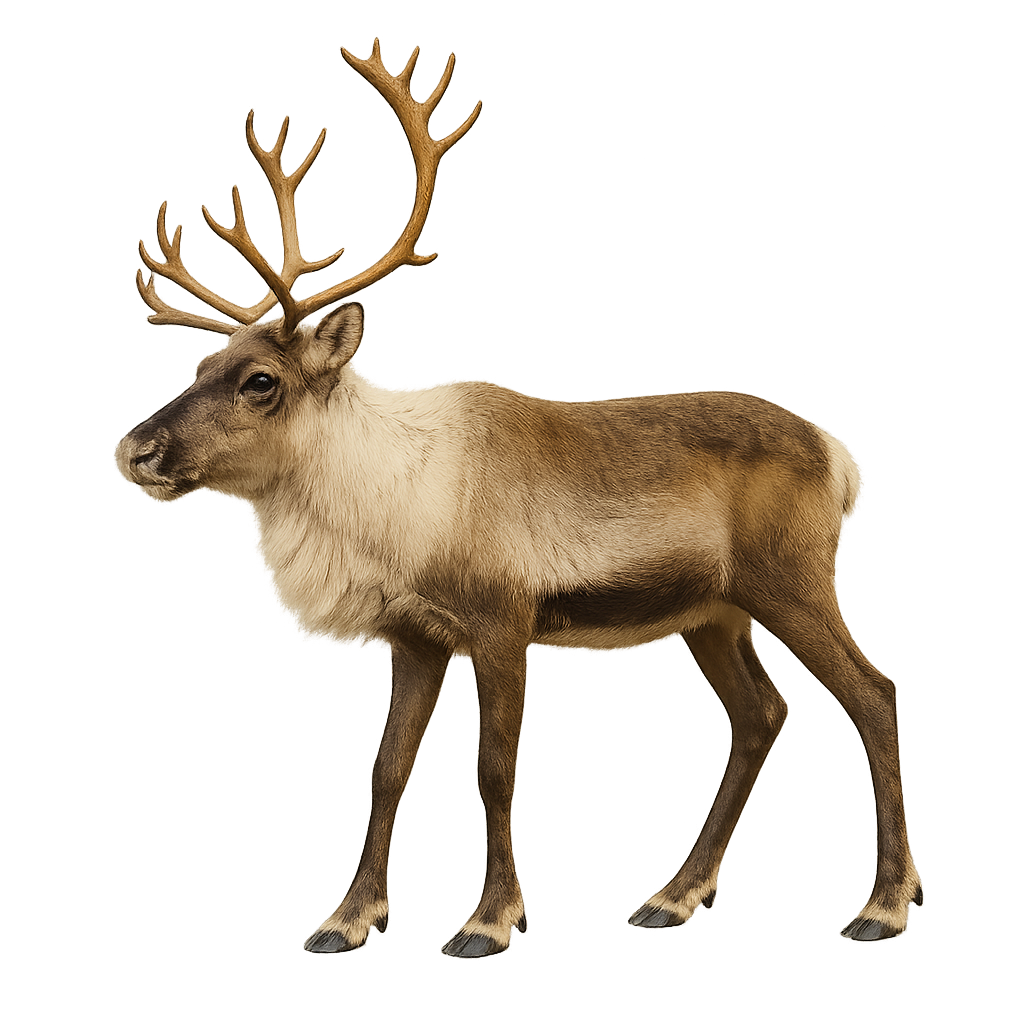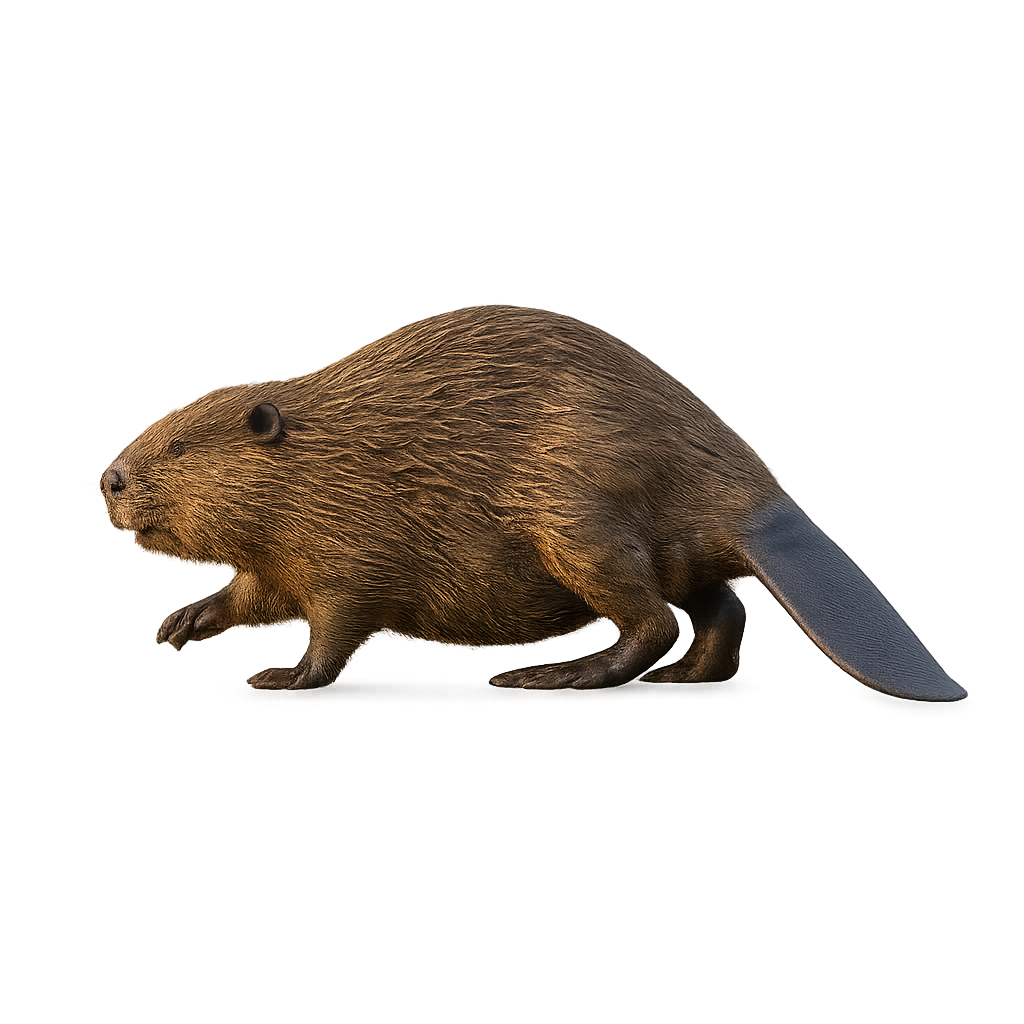The European Bison is the largest land mammal in Europe, characterized by its imposing size, thick fur, and arched back. Once widespread across the forests of Europe, it nearly went extinct in the early 20th century, but thanks to conservation programs, wild populations have been reintroduced in several European regions. The European Bison primarily inhabits forests and wooded meadows, where it feeds on grasses, leaves, twigs, and young tree shoots.
This bison is a social animal, living in small groups or large herds, with males fighting for dominance. While its population is growing, the European Bison remains a vulnerable species due to habitat loss and fragmentation of its territory. The protection and management of its habitats remain essential for its survival.
The Asian badger, or Meles leucurus, is a medium-sized mammal belonging to the Mustelidae family. It is distinguished by its thick fur and characteristic coloration, with a white stripe on the throat and belly. This badger is primarily nocturnal and inhabits forests, grasslands, and steppes of Central and East Asia. It digs complex burrows where it spends the day and raises its young. Omnivorous, it feeds on small animals, insects, fruits, and roots. Although generally solitary, it can sometimes be seen in small family groups. Its adaptability to various habitats and suspicious behavior make it difficult to observe in the wild.
The American Badger is a medium-sized carnivore, easily recognizable by the distinctive white stripes on its head and its sturdy, stocky body. It primarily inhabits prairies and semi-arid areas in North America, where it digs complex burrows for shelter and raising its young. The American Badger is mainly insectivorous, feeding on worms, insects, and occasionally small mammals and reptiles. Its powerful claws allow it to dig quickly and efficiently into the ground.
The American Badger is a solitary animal, often active at dusk and during the night. While not immediately endangered, it can be affected by habitat loss and illegal hunting in some regions.
The European Badger is a medium-sized carnivorous mammal, easily recognizable by its gray fur, white stripes on its head, and stocky build. It primarily inhabits forests and hedgerows in Europe, where it digs complex burrows called "setts" for shelter and raising its young. The European Badger is omnivorous, feeding mainly on worms, insects, fruits, roots, and small mammals. Its nocturnal habits and solitary nature make it a difficult animal to observe.
It is an excellent digger and uses its powerful claws to modify its environment in search of food or to expand its burrow. While its population is generally stable, the European Badger faces threats such as habitat loss and road accidents. Protecting its habitats and managing its territories are crucial for the species' conservation.
The Japanese badger, Meles anakuma, is a medium-sized mammal known for its thick fur and distinctive facial stripes. It primarily inhabits forests and mountainous areas in Japan. This badger is nocturnal, spending the day in burrows it digs itself. It feeds on a variety of foods, including insects, small mammals, and fruits. Although generally solitary, it can sometimes be seen in small family groups. Its ability to adapt to different habitats and its discreet behavior make it difficult to observe in the wild.
The Musk Ox is a large herbivorous mammal, easily recognized by its thick brown fur that protects it from the freezing temperatures of the Arctic. This robust animal, with curved horns and a massive build, primarily inhabits the cold regions of Canada, Greenland, Alaska, and Norway. The Musk Ox feeds on woody plants, lichens, and mosses, which it finds in Arctic and sub-Arctic zones. It forms social groups to protect itself from predators and extreme weather conditions.
Adapted to harsh environments, the Musk Ox is an extremely resilient animal, capable of surviving extremely low temperatures due to its dense coat. However, it remains vulnerable to climate change, habitat loss, and human disturbances, which threaten its population.
Bongo
Cephalophus eurycerus
The Bongo is a large forest antelope native to Central Africa, recognized for its beautiful white stripes and bright orange coat. It primarily lives in dense forests, where it feeds on leaves, fruits, and bark. This antelope is usually solitary or lives in small family groups. Due to habitat loss and hunting, the Bongo is classified as a vulnerable species. Its discretion and ability to blend into its environment make it a difficult animal to spot.
The bonobo, or Pan paniscus, is a great ape native to Africa, closely related to the common chimpanzee. It is distinguished by its more slender build, black face, and pink lips. Bonobos live in complex social groups and are known for their peaceful behavior and conflict resolution through social and sexual interactions. They primarily inhabit the tropical rainforests of the Democratic Republic of the Congo. Their diet is mainly frugivorous, but they also consume leaves, flowers, and occasionally insects. Bonobos are threatened by deforestation and hunting, leading to a decline in their population.
The Walia ibex, or Capra walie, is a species of ibex endemic to the Ethiopian highlands, particularly in the Simien Mountains National Park. It is distinguished by its impressive, curved horns, which can reach up to 110 cm in males. The coat is dark brown with lighter markings on the belly and legs. Males are generally larger and heavier than females, weighing up to 125 kg. This species is well adapted to steep, rocky terrains, where it primarily feeds on grasses and shrubs. Unfortunately, the Walia ibex is critically endangered due to hunting and habitat loss.
The Siberian Ibex, also known as the Asiatic Ibex, is a majestic wild goat species that lives in the rocky mountains of Central Asia, particularly in Russia, Kazakhstan, China, and Mongolia. This imposing animal, with long, curved horns and a dense coat that protects it from harsh winters, typically inhabits the steep slopes of high-altitude mountains.
Herbivorous, the Siberian Ibex primarily feeds on alpine vegetation, grasses, and woody plants. It is particularly agile, capable of moving across rugged terrain and leaping between rocks with ease. While it was once heavily hunted for its valuable horns and meat, conservation efforts have helped stabilize its population, although the Siberian Ibex remains vulnerable due to habitat loss and poaching.
The Alpine Ibex is a large herbivorous mammal, easily recognized by its long, curved horns and light brown or grayish coat. It primarily inhabits the rugged mountains of the Alps, southern Europe, and some mountainous regions of the Middle East. The Alpine Ibex feeds on alpine vegetation, grasses, and woody plants, and it is particularly adapted to life at high altitudes due to its great agility on rocky terrain and its thick coat.
This animal is social and lives in family groups, although adult males, called "ibex", form separate groups. After nearly disappearing in the early 20th century due to overhunting, conservation programs have helped stabilize its population. However, it remains vulnerable to habitat loss and human disturbances.
The Pyrenean Ibex, or Capra pyrenaica pyrenaica, was a subspecies of the Iberian ibex once found in the Pyrenees mountains. This robust caprine was adapted to rugged terrains and harsh climates. It had impressive, curved horns, characteristic of males, while females had smaller horns. Its coat varied from brown to gray, providing effective camouflage in its rocky habitat. Unfortunately, this subspecies became extinct in 2000, due to excessive hunting and habitat degradation. Cloning efforts were made to bring it back to life, but without lasting success. Its extinction highlights the importance of species conservation and the protection of natural habitats.
The Iberian Ibex is a large herbivore native to the mountains of the Iberian Peninsula, primarily in the mountain ranges of the Pyrenees and the Sierra de Gredos in Spain. It is easily recognizable by its massive, backward-curved horns and brown and gray coat. This ibex lives in rocky, steep terrain, where it feeds mainly on grasses, woody plants, and alpine vegetation.
The Iberian Ibex is a social animal that forms family groups consisting of females and young, while adult males, called "ibex," form separate groups. The species nearly went extinct in the 20th century due to overhunting, but thanks to conservation efforts, its population has been restored in several regions of Spain. However, the Iberian Ibex remains vulnerable to habitat loss and human disturbances.
The Nubian ibex, scientifically known as Capra nubiana, is a species of wild goat that inhabits the mountainous regions of the Middle East and North Africa. Adapted to arid and rocky environments, this caprid finds refuge and sustenance in these challenging terrains. Males are notable for their long, curved horns, while females have shorter, thinner ones. Their coat is typically light brown, providing camouflage against the rocky backdrop. Nubian ibexes are agile climbers, adept at navigating steep and rugged landscapes. They live in groups, often consisting of females and young, while adult males tend to be more solitary. Their diet mainly includes dry vegetation, grasses, and leaves.
The Damaliscus korrigum, commonly known as the Coke's hartebeest, is a large African herbivore belonging to the Bovidae family. It is characterized by its reddish-brown coat and lyre-shaped horns. Adapted to savannas and open grasslands, it is often seen in herds. Males are slightly larger than females and have more robust horns. They play a crucial role in the ecosystem by influencing vegetation structure. Their diet mainly consists of grasses, but they can also consume leaves and shoots. Although their population is stable in some areas, they are threatened by hunting and habitat loss.
The Hartebeest is a medium-sized antelope, easily recognized by its slender body, long legs, and slightly curved horns. It primarily inhabits the savannas and open plains of North and West Africa, where it forms large herds. The Hartebeest feeds mainly on grasses and low vegetation, and it is particularly well adapted to life in arid and semi-arid environments.
This species is mainly active at dawn and dusk, avoiding the intense heat of the day. The Hartebeest is threatened by habitat loss due to agriculture and hunting, and although conservation efforts have been made, its population remains vulnerable. It is listed as "Near Threatened" on the IUCN Red List.
The African Buffalo is one of the largest and most powerful herbivorous mammals on the African continent, easily recognizable by its massive body, impressive horns, and dark coat. It primarily inhabits the savannas, grasslands, and open forests of sub-Saharan Africa. This social animal moves in large herds, sometimes composed of hundreds of individuals, which offer protection from predators through the collective strength of the group.
The African Buffalo is a strict herbivore, feeding mainly on grasses and woody vegetation. Although it has a rather calm temperament, it can become extremely aggressive when threatened, and its physical strength makes it a formidable opponent for predators. Despite being a secondary predator, it is vulnerable due to hunting and habitat loss, although conservation efforts have helped stabilize some populations.
The Bubalus arnee, or wild water buffalo, is a large herbivorous mammal native to the wetlands and marshes of South and Southeast Asia. It is characterized by its massive build, curved horns, and thick skin often coated with mud to protect against insects and the sun. Wild water buffaloes live in herds and are known for their social behavior. They play a crucial role in their ecosystem by maintaining the balance of wetland areas. Unfortunately, their population is declining due to habitat loss, hunting, and hybridization with domestic buffaloes.
The water buffalo, or Bubalus bubalis, is a large domesticated mammal native to South and Southeast Asia. Known for its robustness and ability to thrive in wet environments like marshes and rice paddies, it has thick skin and distinctive curved horns. Primarily used for agricultural work and milk production, the water buffalo is vital to the rural economy in many regions. It is also valued for its meat. Although domesticated, it retains a suspicious behavior towards humans. Water buffaloes are social animals that live in herds and often move together for protection against predators.
The Sperm Whale is the largest of the toothed cetaceans and the largest living marine predator today. It is easily recognizable by its massive head, which makes up about one-third of its total body length, and its streamlined body. This cetacean, which can reach up to 20 meters in length and weigh several dozen tons, is a deep-sea creature, primarily feeding on squid, including giant squids, which it hunts at extreme depths.
The Sperm Whale is known for its long migrations, traveling thousands of kilometers between breeding grounds in the tropics and feeding areas in colder waters. Although it was intensively hunted for its oil and blubber in past centuries, it remains a protected species. The Sperm Whale also plays a crucial role in the marine ecosystem by regulating prey populations and maintaining the balance of food chains.
The pygmy sperm whale is a small robust cetacean measuring 2.7–3.4 m in length with a bluish-gray fusiform body. Found in warm temperate and tropical oceans, it deep-dives for squid and fish. Secretive at the surface, it is often spotted by its blow and fluke when it dives.
The common vole, or Microtus arvalis, is a small rodent belonging to the Cricetidae family. It is widely distributed across Europe and Western Asia. This rodent measures about 9 to 12 cm in length, with a tail of 3 to 4 cm. Its fur is typically grayish-brown on the back and lighter on the belly. It primarily inhabits meadows, cultivated fields, and roadsides. The common vole is an herbivore, feeding on grasses, roots, and seeds. It plays a crucial role in the ecosystem as prey for many predators such as birds of prey and foxes. Its population can fluctuate significantly from year to year, thus influencing the abundance of its predators.
The white-faced capuchin, Cebus capucinus, is a New World monkey known for its pale face contrasting with its dark body. It primarily inhabits the tropical rainforests of Central America, from Honduras to Panama. Agile and intelligent, it uses tools for feeding and engages in social interactions within hierarchical groups. Omnivorous, it consumes fruits, insects, small vertebrates, and occasionally bird eggs. Its ecological role is crucial, particularly in seed dispersal. Although adaptable, deforestation threatens its habitat. Its complex communication includes varied vocalizations and facial expressions.
The White-faced Capuchin is a small, intelligent, and social monkey, easily recognizable by its pale face, framed by darker fur, and its agile, slender body. This primate lives in the tropical forests of Central and South America, primarily inhabiting the canopy, where it feeds on fruits, seeds, insects, and occasionally small vertebrates.
White-faced Capuchins are highly social animals, living in family groups or bands of up to twenty individuals. They are known for their great learning ability and curious behavior, often used in behavioral studies due to their intelligence and problem-solving skills. Unfortunately, like many other primate species, they are threatened by deforestation and habitat loss.
The Cebus albifrons, or white-fronted capuchin, is a New World monkey found in the tropical forests of South America. It is easily recognized by its light brown fur and distinctive white face. These primates are highly social, living in groups of up to 30 individuals. They are omnivorous, feeding on fruits, insects, small vertebrates, and occasionally leaves. Their intelligence is remarkable, and they use tools to access food. Although primarily arboreal, they sometimes descend to the ground to forage. Their habitat is threatened by deforestation, impacting their population.
The Capybara is the largest rodent in the world, easily recognizable by its massive body and short, light brown fur. This semi-aquatic mammal primarily inhabits wetland areas of South America, near rivers, lakes, and swamps. The Capybara is an excellent swimmer and spends much of its time in the water, where it feeds mainly on aquatic grasses, plants, and fallen fruits.
Naturally social, the Capybara lives in large groups of 10 to 20 individuals, often organized around a social hierarchy. The groups spend a lot of time grooming each other and protecting each other from predators. Although it is a calm and docile animal, the Capybara is threatened by the loss of its natural habitat due to urbanization and pollution of rivers. However, its population remains relatively stable, and it is often seen in protected areas.
The Caracal is an elegant feline, easily recognizable by its pointed ears adorned with tufts of black fur. It has a short tawny coat that allows it to blend into the dry, rocky environments where it lives, primarily in savannas, steppes, and semi-desert areas in Africa and Western Asia. This agile and fast predator primarily hunts birds, small mammals, and reptiles, often catching prey by leaping great heights to snatch them in mid-air.
The Caracal is a solitary and territorial hunter. It uses its long back legs to make impressive jumps, capable of reaching up to three meters high. While the species is relatively widespread, it faces threats due to habitat loss and poaching. The Caracal is protected in several regions, and its population is monitored.
The Caribou, or Reindeer in Europe, is a large cervid adapted to cold and northern environments. It is easily recognizable by its distinctive antlers, which are present in both males and females, a unique trait among cervids. Its thick, woolly coat, typically brown with lighter shades on the belly and neck, allows it to survive in the harshest climates. Caribou populations are found primarily in arctic and subarctic regions, including Iceland, where they were introduced and have thrived in the mountainous and tundra landscapes.
The Caribou is a migratory species, undertaking long seasonal migrations to find food resources. It primarily feeds on lichens, grasses, and tundra plants, which it digs out from under the snow during the winter. The Caribou plays a crucial role in its ecosystem by affecting vegetation and serving as prey for large carnivores such as wolves. However, it is threatened by climate change and habitat loss.
The European Beaver is a large, semi-aquatic rodent renowned for its exceptional ability to alter its environment. This rodent is easily identifiable by its brown fur, large orange incisors, and flat, scaly tail. It primarily inhabits rivers, lakes, and wetlands, where it builds dams to create ponds and wetlands that serve as refuges. The European Beaver is an excellent swimmer, capable of staying underwater for several minutes to move or escape danger.
It feeds mainly on bark, roots, and young tree shoots. In addition to its ability to modify waterways, the European Beaver plays a crucial role in the ecosystem by promoting the regeneration of wetland areas, which benefits many other animal species. Although its population was historically threatened by hunting and habitat loss, conservation efforts have stabilized its numbers, and the species is now protected in many regions.
The American Beaver is a large, semi-aquatic rodent famous for its construction skills and its ability to modify its environment. It is easily recognizable by its wide head, large orange incisors, and its flat, scaly tail. The American Beaver primarily lives in rivers, lakes, and wetlands, where it builds dams and lodges using branches, tree trunks, and mud to create safe, stable habitats.
This rodent is an excellent swimmer and spends much of its life in the water, where it feeds mainly on bark, roots, and young tree shoots. The American Beaver plays a crucial role in its ecosystem by altering waterways, creating ponds and wetlands that are beneficial to many other species. However, it is sometimes threatened by habitat loss due to urbanization and water management.


